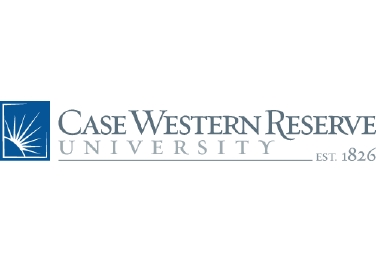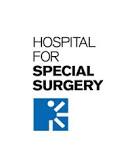Spine Patient Outcomes Research Trial (SPORT): Spinal Stenosis
| Status: | Completed |
|---|---|
| Conditions: | Back Pain, Orthopedic |
| Therapuetic Areas: | Musculoskeletal, Orthopedics / Podiatry |
| Healthy: | No |
| Age Range: | 18 - Any |
| Updated: | 4/21/2016 |
| Start Date: | March 2000 |
| End Date: | April 2015 |
Spine Patient Outcomes Research Trial (SPORT): A Multicenter Trial for Spinal Stenosis (SpS)
This study tests the effectiveness of different treatments for the three most commonly
diagnosed conditions of the lower backbone (lumbar spine). The purpose is to learn which of
two commonly prescribed treatments (surgery and nonsurgical therapy) works better for
specific types of low back pain. Low back pain is one of the most widely experienced health
problems in the United States and the world. It is the second most frequent condition, after
the common cold, for which people see a doctor or lose days from work.
In this part of the study, we will treat patients with spinal stenosis (a narrowing of
spaces in the backbone that results in pressure on the spinal cord and/or nerve roots) with
a type of surgery known as posterior decompressive laminectomy or with nonsurgical methods.
This study does not cover the cost of treatment.
diagnosed conditions of the lower backbone (lumbar spine). The purpose is to learn which of
two commonly prescribed treatments (surgery and nonsurgical therapy) works better for
specific types of low back pain. Low back pain is one of the most widely experienced health
problems in the United States and the world. It is the second most frequent condition, after
the common cold, for which people see a doctor or lose days from work.
In this part of the study, we will treat patients with spinal stenosis (a narrowing of
spaces in the backbone that results in pressure on the spinal cord and/or nerve roots) with
a type of surgery known as posterior decompressive laminectomy or with nonsurgical methods.
This study does not cover the cost of treatment.
Low back pain is considered one of the most widely experienced health problems in the U.S.
and the world. It is the second most frequent condition, after the common cold, for which
patients see a physician or lose days from work. Estimated costs to those who are severely
disabled from low back pain range from $30-70 billion annually. Rates of spinal surgery in
the U.S. have increased sharply over time, and researchers have documented 15-fold
geographic variation in rates of these surgeries. In many cases, where one lives and who one
sees for the condition appear to determine the rates of surgery. Despite these trends, there
is little evidence proving the effectiveness of these therapies over non-surgical
management.
This study will use the National Spine Network to conduct a multicenter, randomized,
controlled trial for the three most common diagnostic groups for which spine surgery is
performed: lumbar intervertebral disc herniation (IDH), spinal stenosis (SpS), and spinal
stenosis secondary to degenerative spondylolisthesis (DS). This arm of the trial will deal
with patients from the second diagnostic group. The study will compare the most commonly
used standard surgical treatments to the most commonly used standard nonsurgical treatments.
We will conduct the study at 12 sites throughout the United States.
The primary endpoint of the study will be changes in health-related quality of life as
measured by the SF-36 health status questionnaire. Secondary endpoints will include patient
satisfaction with treatment, utility for current health in order to estimate
quality-adjusted life years (QALYS) as the measure for cost-effectiveness, resource use, and
cost.
We will follow patients at 6 weeks and 3, 6, 12, and 24 months to determine their health
status, function, satisfaction, and health care use. We anticipate that we will enroll and
randomly allocate a total of 370 study participants in this arm of the trial. We will track
an additional observational cohort to assess health and resource outcomes. Enrollment in the
Observational cohort has been completed as of February 2003.
We will integrate data from the trial and observational cohorts to formally estimate the
cost-effectiveness of surgical versus nonsurgical interventions for IDH, SpS, and DS. The
results of this trial will provide, for the first time, scientific evidence as to the
relative effectiveness of surgical versus nonsurgical treatment for these three most
commonly diagnosed lumbar spine conditions.
and the world. It is the second most frequent condition, after the common cold, for which
patients see a physician or lose days from work. Estimated costs to those who are severely
disabled from low back pain range from $30-70 billion annually. Rates of spinal surgery in
the U.S. have increased sharply over time, and researchers have documented 15-fold
geographic variation in rates of these surgeries. In many cases, where one lives and who one
sees for the condition appear to determine the rates of surgery. Despite these trends, there
is little evidence proving the effectiveness of these therapies over non-surgical
management.
This study will use the National Spine Network to conduct a multicenter, randomized,
controlled trial for the three most common diagnostic groups for which spine surgery is
performed: lumbar intervertebral disc herniation (IDH), spinal stenosis (SpS), and spinal
stenosis secondary to degenerative spondylolisthesis (DS). This arm of the trial will deal
with patients from the second diagnostic group. The study will compare the most commonly
used standard surgical treatments to the most commonly used standard nonsurgical treatments.
We will conduct the study at 12 sites throughout the United States.
The primary endpoint of the study will be changes in health-related quality of life as
measured by the SF-36 health status questionnaire. Secondary endpoints will include patient
satisfaction with treatment, utility for current health in order to estimate
quality-adjusted life years (QALYS) as the measure for cost-effectiveness, resource use, and
cost.
We will follow patients at 6 weeks and 3, 6, 12, and 24 months to determine their health
status, function, satisfaction, and health care use. We anticipate that we will enroll and
randomly allocate a total of 370 study participants in this arm of the trial. We will track
an additional observational cohort to assess health and resource outcomes. Enrollment in the
Observational cohort has been completed as of February 2003.
We will integrate data from the trial and observational cohorts to formally estimate the
cost-effectiveness of surgical versus nonsurgical interventions for IDH, SpS, and DS. The
results of this trial will provide, for the first time, scientific evidence as to the
relative effectiveness of surgical versus nonsurgical treatment for these three most
commonly diagnosed lumbar spine conditions.
Inclusion Criteria:
- Duration of Symptoms: 12 or more weeks.
- Treatments tried: Nonsteroidal anti-inflammatory medical therapy and physical
therapy.
- Surgical Screening: Pain in low back, buttocks, or lower extremity that becomes worse
with lumbar extension. Must be confirmed by evidence of central or central-lateral
compression of the cauda equina by a degenerative lesion of the facet joint, disc, or
ligamentum flavum on MRI, computed tomography scans, or myelograms.
- Tests: MRI to confirm diagnosis and level(s).
Exclusion Criteria:
- Previous lumbar spine surgery.
- Not a surgical candidate for any of these reasons: Overall health that makes spinal
surgery too life-threatening to be an appropriate alternative, patient has improved
dramatically with conservative care, or the patient is unable (for any reason) to
undergo surgery within 6 months.
- Possible pregnancy.
- Active malignancy: Patients with a history of any invasive malignancy (except
nonmelanoma skin cancer) are ineligible unless they have been treated with curative
intent AND have not had any clinical signs or symptoms of the malignancy for at least
5 years.
- Current fracture, infection, and/or deformity (greater than 15 degrees of lumbar
scoliosis, using Cobb measure technique) of the spine.
- Age less than 18 years.
- Cauda equina syndrome or progressive neurologic deficit (usually requiring urgent
surgery).
- Unavailability for followup (planning to move, no telephone, etc.) or inability to
complete data surveys.
- Symptoms less than 12 weeks.
- Patient currently enrolled in any experimental "spine related" study.
We found this trial at
13
sites
Case Western Reserve Univ Continually ranked among America's best colleges, Case Western Reserve University has...
Click here to add this to my saved trials
Washington University Washington University creates an environment to encourage and support an ethos of wide-ranging...
Click here to add this to my saved trials
Click here to add this to my saved trials
Click here to add this to my saved trials
Click here to add this to my saved trials
Click here to add this to my saved trials
Hospital for Special Surgery Founded in 1863, Hospital for Special Surgery is the nation
Click here to add this to my saved trials
Click here to add this to my saved trials
Click here to add this to my saved trials
Click here to add this to my saved trials
Click here to add this to my saved trials
500 Parnassus Ave
San Francisco, California 94143
San Francisco, California 94143
(415) 476-9000

University of California at San Francisco (UCSF) The leading university exclusively focused on health, UC...
Click here to add this to my saved trials
Click here to add this to my saved trials


